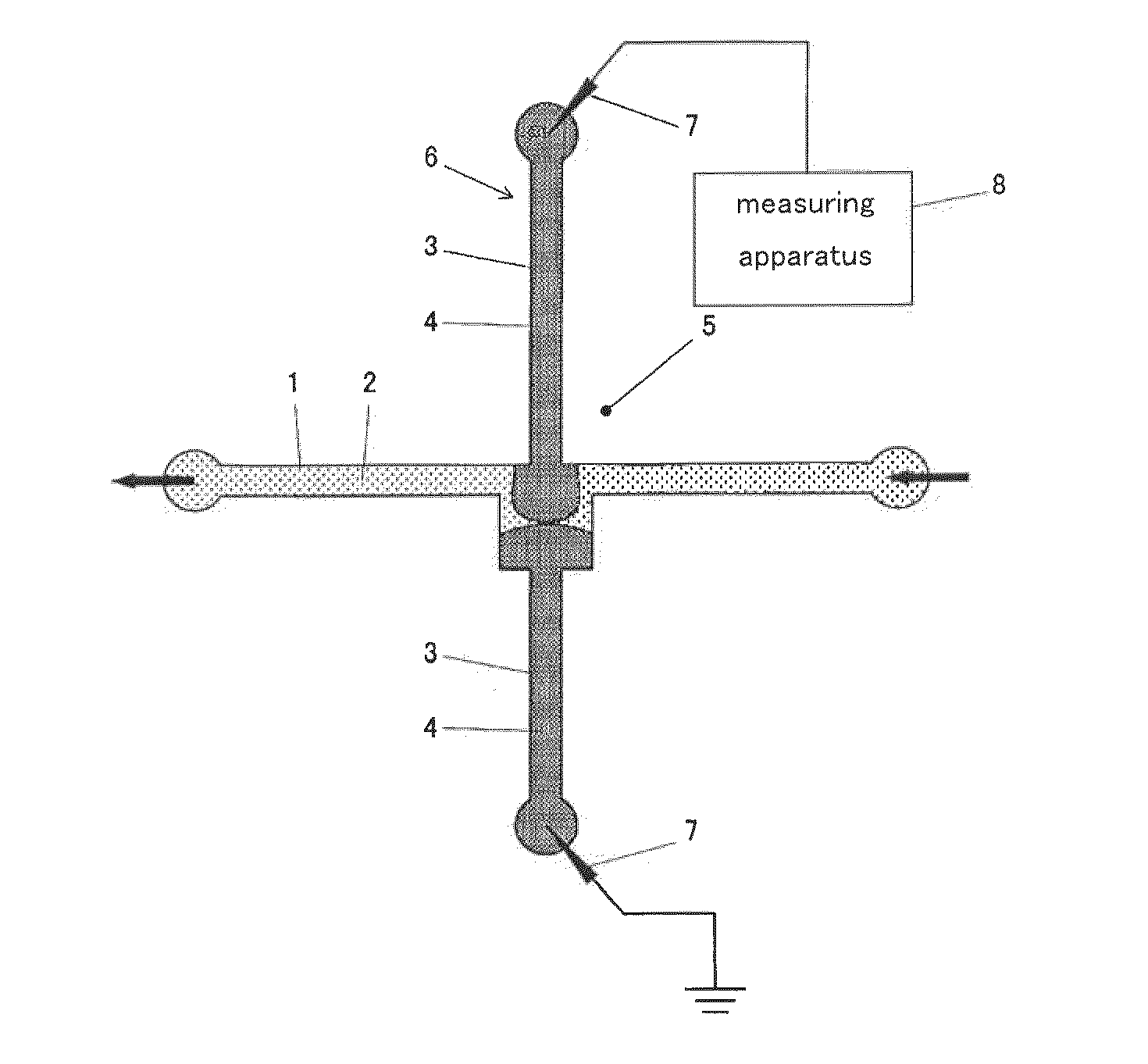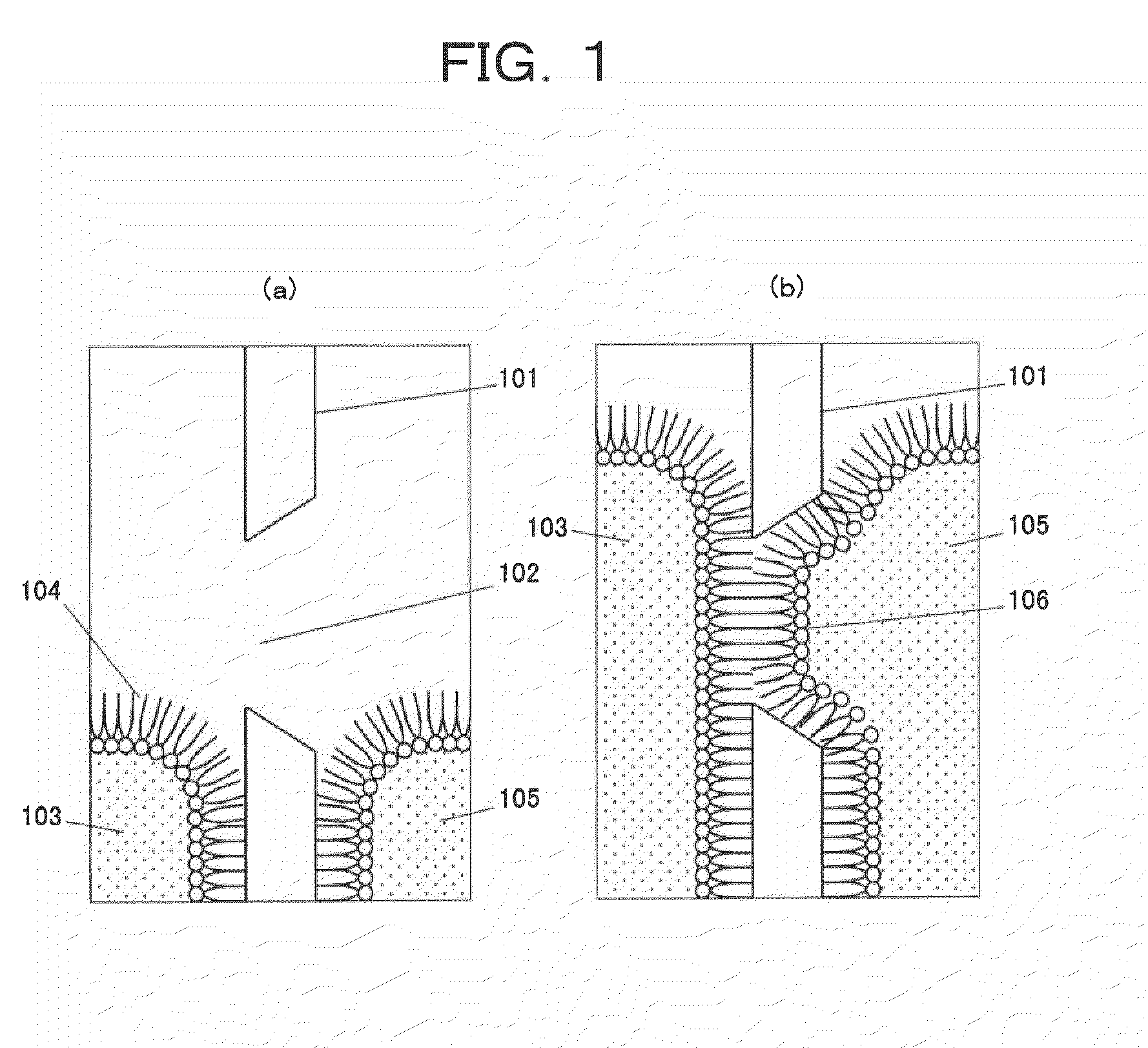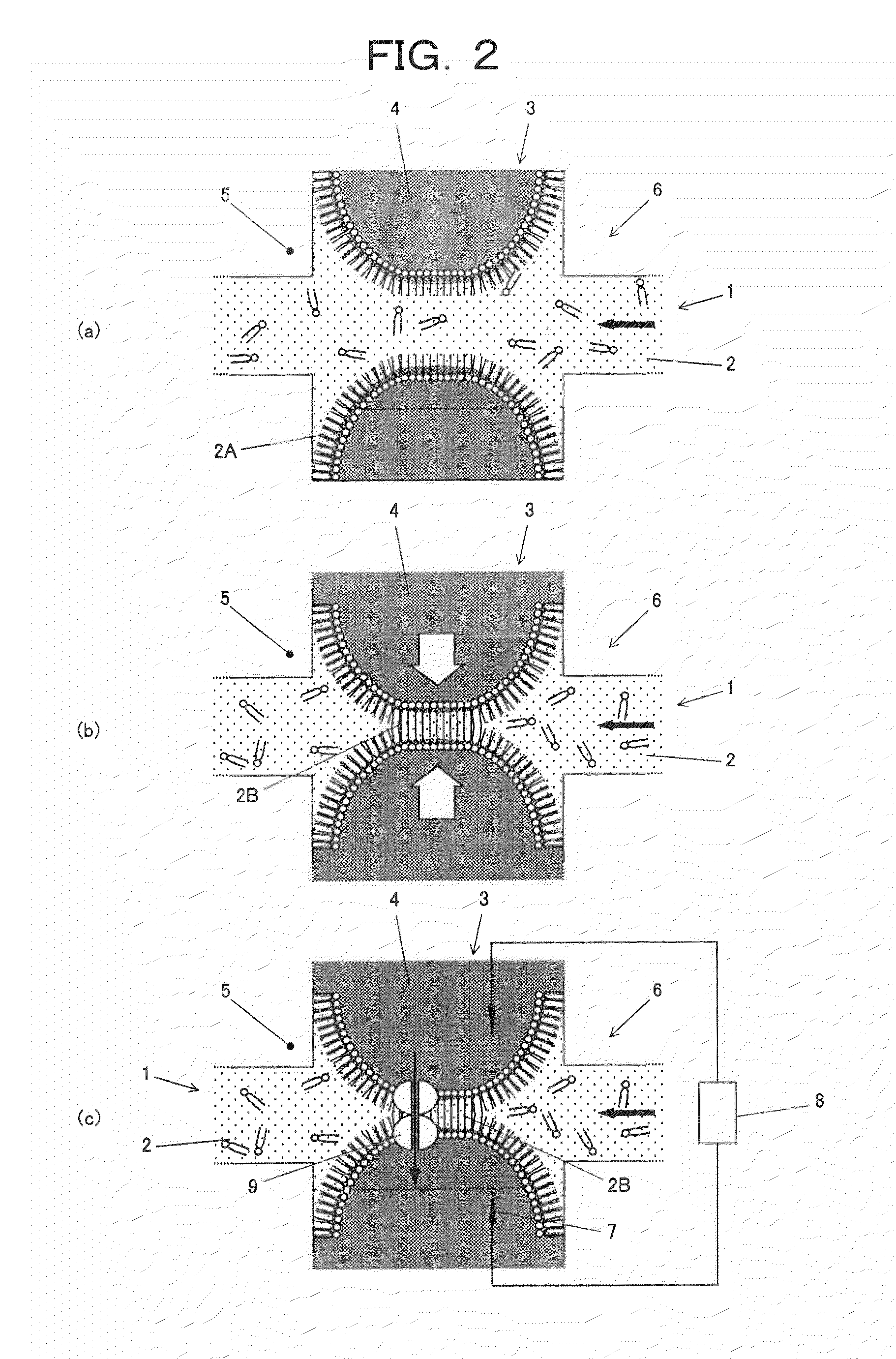Method of forming bilayer membrane by contact between amphipathic monolayers and apparatus therefor
a monolayer and amphipathic technology, applied in chemical analysis using titration, machine/engine, biomass after-treatment, etc., can solve the problems of difficult process for removal of intermediate liquid layer, large chamber of several cm in size, and inability to observe microscopically, etc., to achieve low reproducibility and long time
- Summary
- Abstract
- Description
- Claims
- Application Information
AI Technical Summary
Benefits of technology
Problems solved by technology
Method used
Image
Examples
first embodiment
[0081]FIG. 2 is a view of a method of forming a bilayer by contact of monolayers using a substantially cross-shaped chamber in accordance with the present invention, and FIG. 2(a) is a view showing the state that the interfaces of aqueous solutions are not in contact with each other, while FIG. 2(b) is a view showing the state that the interfaces of aqueous solutions are in contact with each other.
[0082]Firstly, as shown in FIG. 2(a), an organic solvent 2 containing lipid molecules is introduced into a first microchannel 1 formed on a substrate 5. A second microchannel 3 is fabricated so as to cross orthogonally with the first microchannel 1, and a liquid 4 immiscible with the organic solvent 2 containing lipid molecules (for example, an aqueous solution) is introduced from the both ends of the second microchannel 3 toward the intersection of the first and the second microchannels. Syringe pumps (not shown in the view) are placed on the both ends of the second microchannel 3, and th...
second embodiment
[0098]FIG. 7 is a schematic plan view of an apparatus for forming lipid bilayer by the contact of monolayers including a plurality of compartments having a constriction portion in accordance with the present invention, and FIG. 8 is a schematic perspective view of a method of forming lipid bilayer using this apparatus.
[0099]Firstly, a chamber 12 separated by a constriction portion 13 is prepared on a substrate 11 opened in an upward direction as shown in FIG. 7(a) and FIG. 8(a). Next, the chamber 12 having the constriction portion 13 is filled with an organic solvent 14 containing lipid molecules as shown in FIG. 7(b) and FIG. 8(b). Next, liquid droplets 16 and 17 of an aqueous solution immiscible with the organic solvent 14 containing lipid molecules are added dropwise by a pipette 15 (see FIG. 8(c)) into each of a compartment of the chamber 12 separated by the constriction portion 13 as shown in FIG. 7(c) and FIG. 8(c). Then, in this state, lipid monolayers 18 are formed on the in...
third embodiment
[0110]FIG. 12 is a schematic plan view of an apparatus for forming two lipid bilayers including a chamber separated into three in lateral sequences by two constriction portions in accordance with the present invention.
[0111]In accordance with this embodiment, a chamber 42 with a lateral series of two constriction portions 43 and 44 is prepared, and an organic solvent 45 containing lipid molecules is introduced into the chamber 42. By introducing three liquid droplets 46, 47, and 48 thereto, a first lipid bilayer 49 is formed on the contact surface of the liquid droplets 46 and 47, and a second lipid bilayer 50 is formed on the contact surface of the liquid droplets 47 and 48.
PUM
| Property | Measurement | Unit |
|---|---|---|
| size | aaaaa | aaaaa |
| voltage | aaaaa | aaaaa |
| depth | aaaaa | aaaaa |
Abstract
Description
Claims
Application Information
 Login to View More
Login to View More - R&D
- Intellectual Property
- Life Sciences
- Materials
- Tech Scout
- Unparalleled Data Quality
- Higher Quality Content
- 60% Fewer Hallucinations
Browse by: Latest US Patents, China's latest patents, Technical Efficacy Thesaurus, Application Domain, Technology Topic, Popular Technical Reports.
© 2025 PatSnap. All rights reserved.Legal|Privacy policy|Modern Slavery Act Transparency Statement|Sitemap|About US| Contact US: help@patsnap.com



